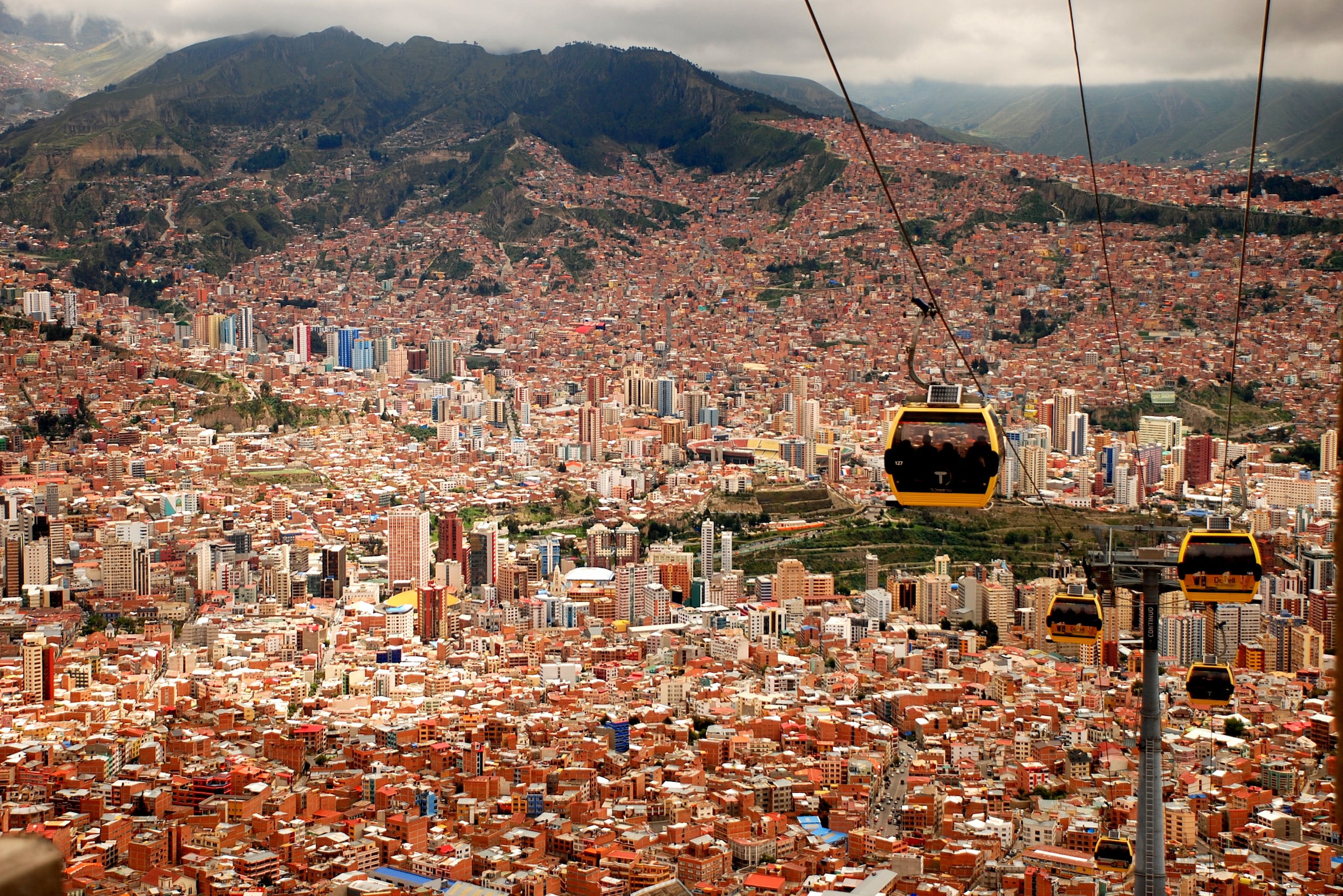Public transportation has long been a key area of concern for authorities in South American cities. Transit networks are often poorly constructed within a framework of unregulated urban planning (Vasallo and Bueno, 2019). Furthermore, noise pollution and emission levels are high due to traffic congestion and antiquated road networks. These issues are exacerbated by the extreme terrain many South American cities are built upon. Cities such as Medellin, Caracas and La Paz all sit nestled in valleys and plateaus with steep mountain ranges flanking their centres. Large numbers of residents, often from a lower socio-economic status, reside in these neighbourhoods perched on mountainsides. The pairing of a steep topography with a poorly designed and congested road network renders many traditional transit forms ineffective. For many South American cities, surface level transit was impractical and underground transit systems would be extremely costly.
With the directions of ‘under’ and ‘through’ off the table for municipal authorities, the solution decided upon was to travel ‘above’. Often designed to connect the poorer fringe neighbourhoods to the hubs of the city, aerial transit systems came into place. Travelling over the urban landscapes, aerial tramways and gondolas have transformed the South America transit scene.
Medellin, Colombia:
Year opened: 2004
Number of lines: 6
Net system length: 14.62km

As the first city to integrate gondola lifts (cable car) into the existing transit network (BBC Future, 2019), the Metrocable in Medellin was a pioneering influence to nearby cities. Going on to inspire Caracas, La Paz and countless other cities, the Metrocable came with a newfound positivity within the once infamous city of Medellin. Comunas on the high up and steeped fringes of Medellin were isolated from much of the city’s economic activity which led to their synonymity as crime ridden and deprived (Drummond, 2012). The genesis of the Metrocable in 2004 sought to connect the excluded comunas back with the city centre. This process has helped to raise living standards and employment whilst reducing the high crime rates (Matsuyaki et al, 2020). Moreover, the innovation of the Metrocable placed Medellin on the transit map and the gondolas have since become tourist attractions themselves.
Caracas, Venezuela:
Year opened: 2010
Number of lines: 3
Net system length: 9.8km

Inspired by Medellin, in neighbouring Venezuela authorities saw an opportunity to resurrect areas of their capital city, Caracas. Operating under the similar name of Metrocable de Caracas, this new transit system hoped to replicate the results seen in Medellin. Existing in an equally steep topography and experiencing parallels with disconnected communities and social disorder, Caracas was perfect for a gondola system. While equalling Medellin’s focus of connecting communities to employment, education and health, the Metrocable de Caracas also aimed for cultural connectivity. The varying lines now connect communities with libraries, markets and theatres (Gondola Project, 2015). A cool engineering invention of the Metrocable de Caracas is its ability to perform 90º turns using deflection bullwheels (Gondola Project, 2015) which allow cabins to switch lines at stations.
La Paz, Bolivia:
Year opened: 2014
Number of lines: 10
System length: 30.6km

Opening a few years after the Metrocable de Caracas, the third major gondola system hit South America – this time in Bolivia’s capital, La Paz. Known as the highest capital city with an altitude of 3,869 metres (Statista, 2023), La Paz is located high up in the Bolivian altiplano. Opening in 2014, Mi Teleferico travels across the La Paz-El Alto region of the country. Designed to relieve a chaotic and congested transit network, the gondola system offers a more sustainable and environmentally friendly future for the city. Planning for an aerial transit network in Bolivia had been discussed as early the 1970s but designs were rejected each time. Unlike in Medellin and Caracas where gondola networks link up with bigger transit systems, Mi Teleferico operates as the primary mode of transport in the area.
These three innovative systems have gone on to since inspire the Cablebus/Mexicable network in Mexico and the Teleferico de Santo Domingo in Dominican Republic. Subsequently, the notion of aerial tramways can be described as mobile policy as authorities look to nearby cities for inspiration and innovation. Each new network that appears on the aerial transit scene contributes something innovative to the field, allowing for much needed positive development. In an ever increasingly globalised world, policy and knowledge has become much more mobile. From accessing information online to better connected cities, policymakers can undertake site visits easily alongside firms working on an international basis.
Aerial transit in South America is a great example of how mobile policy in the age of globalisation can combat geographical adversity and reconnect communities. Purposeful design and innovation as shown in cities like Medellin, Caracas and La Paz can act as inspiration to cities across the globe struggling with their own transit concerns.

